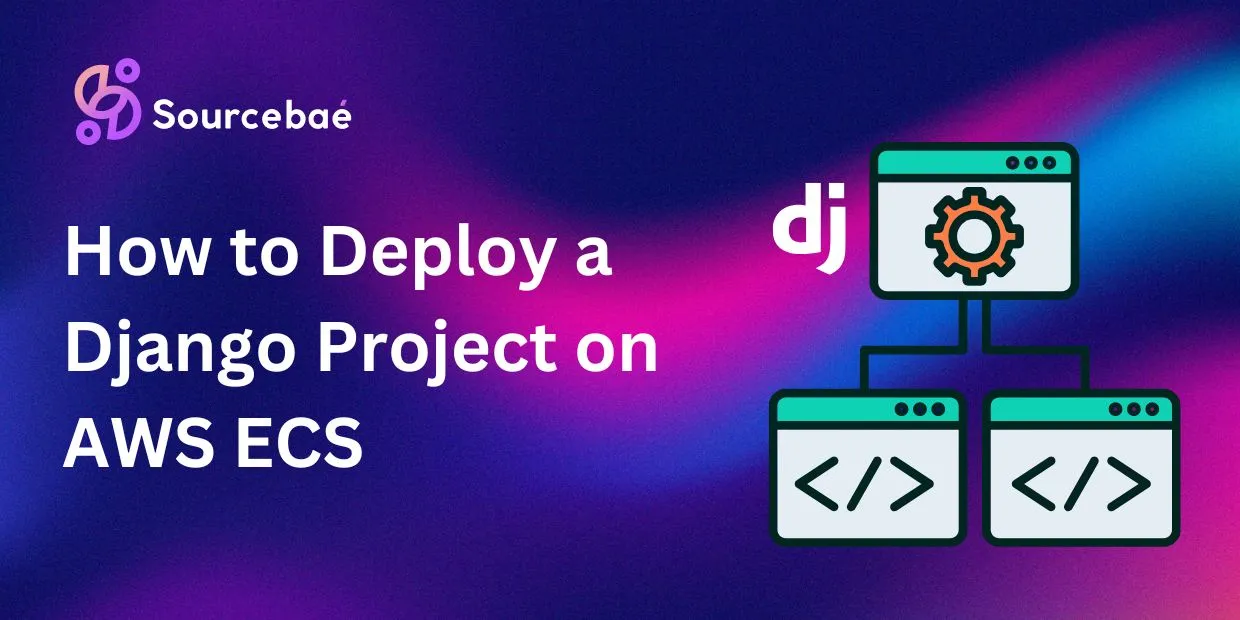Are you looking to Deploy a Django Project on (AWS) Amazon Web Services Elastic Container Service (AWS ECS)? You’ve come to the right place. In this article, we’ll walk you through the entire process, from start to finish. Deploying a Django project on AWS ECS may seem daunting, but with the right guidance, it can be a smooth and efficient experience.
Let’s dive in and explore the world of Django deployment on AWS ECS.
1. Understanding AWS ECS
What is AWS ECS?
Amazon Elastic Container Service (ECS) is a highly scalable and efficient container management service offered by AWS. It allows you to easily run, stop, and manage Docker containers on a cluster of AWS EC2 instances.
Why Choose AWS ECS?
AWS ECS provides a reliable and cost-effective way to deploy and manage containerized applications. It offers features like auto-scaling, load balancing, and integration with other AWS services, making it an excellent choice for deploying Django applications.
2. Prerequisites
Before we begin, let’s make sure you have everything you need to deploy your Django project on AWS ECS.
Setting up an AWS Account
To use AWS ECS, you’ll need an AWS account. If you don’t have one, sign up for an AWS account on the AWS website.
Installing Docker
Docker is a crucial component for containerization. Install Docker on your local development machine by following the official Docker installation guide.
3. Containerizing Your Django Application
Now that we have the prerequisites in place, it’s time to containerize your Django application.
Creating a Dockerfile
A Dockerfile is a script used to create a Docker image of your application. It defines the environment and dependencies for your Django project. Here’s a basic Dockerfile for a Django application:
# Use an official Python runtime as a parent image
FROM python:3.8-slim
# Set environment variables
ENV PYTHONDONTWRITEBYTECODE 1
ENV PYTHONUNBUFFERED 1
# Create and set the working directory
WORKDIR /app
# Copy the dependencies file to the working directory
COPY requirements.txt /app/
# Install any needed packages specified in requirements.txt
RUN pip install --no-cache-dir -r requirements.txt
# Copy the rest of the application code to the working directory
COPY . /app/Building a Docker Image
Once you’ve created your Dockerfile, use the docker build command to build a Docker image for your Django project.
4. Setting Up AWS ECS
With your Docker image ready, it’s time to configure AWS ECS for your Django application.
Creating an ECS Cluster
In the AWS Management Console, navigate to ECS and create a new cluster. Choose the EC2 Linux + Networking launch type for this tutorial.
Defining a Task Definition
A task definition is a blueprint for your application. It specifies which Docker image to use and how the containers should behave. Create a new task definition and specify your Django image.
5. Deploying Your Django Project
Now that your AWS ECS environment is set up, it’s time to deploy your Django project.
Creating a Service
In ECS, a service is used to maintain a specified number of running tasks of a task definition. Create a service for your Django application, and AWS ECS will automatically manage the desired number of tasks.
Configuring Load Balancing
To ensure high availability and scalability, set up a load balancer for your Django service. This distributes incoming traffic across your containers.
6. Testing and Scaling
Before going live, thoroughly test your Django application on AWS ECS. Ensure that everything works as expected.
Scaling Your Service
AWS ECS makes it easy to scale your application based on traffic. You can configure auto-scaling policies to add or remove containers as needed.
FAQs
Can I use AWS Fargate instead of EC2 for ECS?
Yes, you can use AWS Fargate, a serverless compute engine for containers, instead of EC2 instances with ECS. It simplifies container management but comes with different pricing considerations.
How do I access the logs of my Django containers?
You can access container logs in AWS CloudWatch or use a third-party logging solution like ELK Stack or Splunk.
What is the cost of running Django on AWS ECS?
The cost depends on factors like the number of containers, their size, and traffic. AWS provides a pricing calculator to estimate your monthly expenses.
How can I secure my Django application on AWS ECS?
You can enhance security by using AWS Identity and Access Management (IAM), VPC security groups, and HTTPS for communication.
Can I deploy multiple Django applications on the same ECS cluster?
Yes, you can deploy multiple applications on the same cluster by creating separate task definitions and services.
What are the benefits of using AWS ECS for Django deployment?
AWS ECS offers scalability, reliability, and seamless integration with other AWS services, making it a powerful choice for deploying Django applications.
Conclusion
Deploying a Django project on AWS ECS can greatly enhance your application’s performance and scalability. With this guide, you’ve learned the essential steps to containerize your Django app and set up AWS ECS for deployment. Take advantage of AWS’s powerful cloud infrastructure to ensure your Django application runs smoothly and efficiently.
Remember that successful deployment requires testing and monitoring. Keep refining your setup to meet your application’s evolving needs, and you’ll be on your way to Django deployment success on AWS ECS.
READ MORE: How do I update a JSON column in MySQL?





